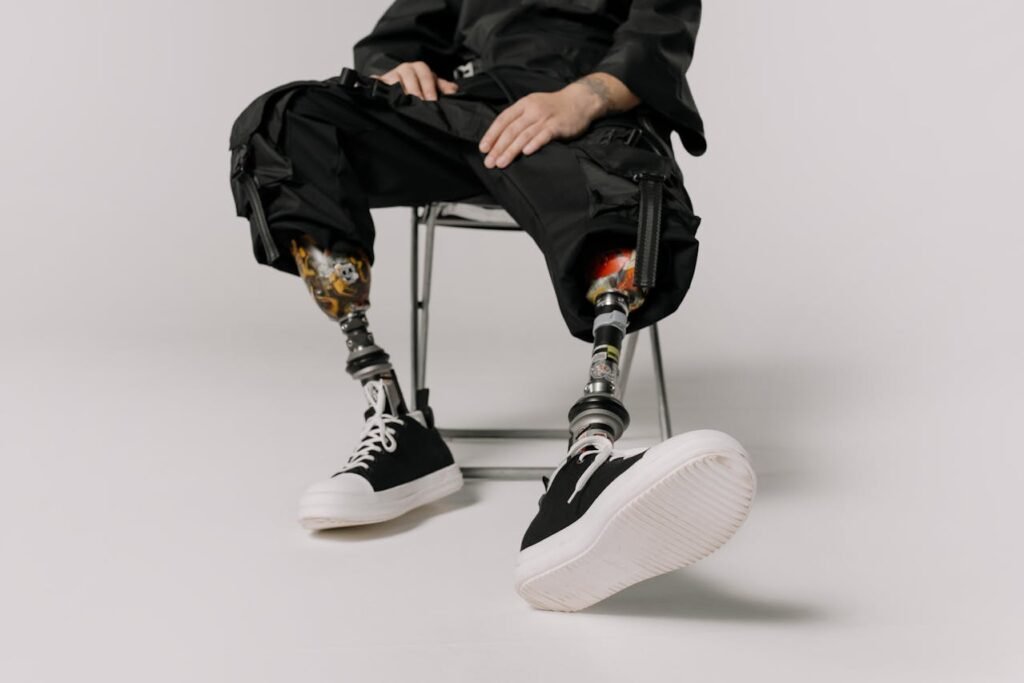For individuals who enjoy high-impact activities, such as running, hiking, or participating in sports, choosing the right prosthetic is essential. High-impact activities place unique demands on prosthetic devices, requiring them to withstand increased physical stress, provide stability, and deliver reliable performance in dynamic environments. The right prosthetic can empower users to embrace these activities with confidence, transforming their lives by enabling them to pursue their passions.
However, not all prosthetics are designed for high-impact use. Selecting a device that aligns with your activity level, lifestyle, and goals involves understanding the features and capabilities that make a prosthetic suitable for rigorous tasks. This guide explores what you need to know when choosing a prosthetic for high-impact activities, from materials and mechanics to the role of advanced technology.
Understanding the Demands of High-Impact Activities
High-impact activities subject prosthetic devices to significant mechanical and environmental stress. Running, jumping, and quick directional changes require a prosthetic limb to absorb shock, provide stability, and maintain durability over time. Beyond physical demands, these activities often require precise control and responsiveness, ensuring the user feels confident and connected to their prosthetic during intense movement.
The Importance of Shock Absorption
Shock absorption is a critical feature for prosthetics designed for high-impact activities. Every stride, jump, or landing generates forces that travel through the prosthetic and into the residual limb. Without adequate shock absorption, these forces can cause discomfort, fatigue, or even injury over time.
Prosthetic feet and knees equipped with energy-return systems are particularly effective for high-impact users. These systems store energy during compression—such as when the foot strikes the ground—and release it during the push-off phase, enhancing propulsion and reducing strain. Materials like carbon fiber, known for their combination of strength and flexibility, are commonly used to achieve these effects.
For businesses, emphasizing the importance of shock absorption in product designs and marketing materials can resonate with active users. Demonstrating how these features translate to improved performance and reduced impact on the body helps build trust and confidence.
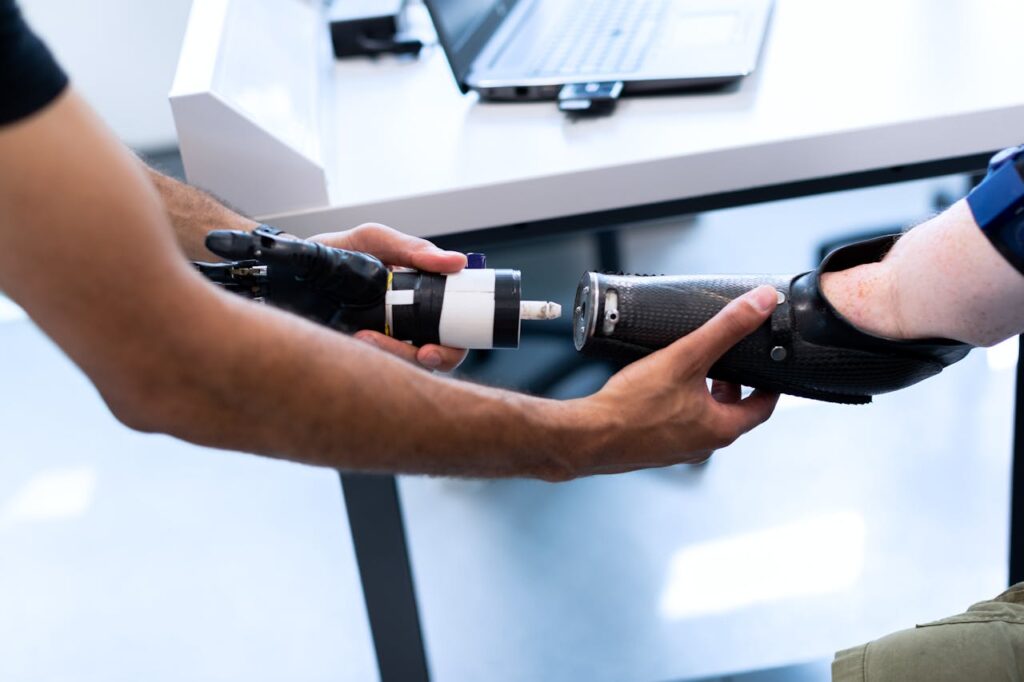
Durability for Active Lifestyles
High-impact activities demand prosthetics that can withstand repeated stress without compromising performance. Durability is achieved through the use of robust materials, precision engineering, and rigorous testing. Whether navigating uneven terrain or competing in a marathon, the user relies on their prosthetic to deliver consistent performance.
Businesses should prioritize material research, opting for lightweight but resilient options like titanium alloys and reinforced composites. Showcasing the durability of your prosthetics through real-world use cases, athlete testimonials, or endurance testing results can differentiate your products from competitors.
Specialized Prosthetics for High-Impact Use
When it comes to high-impact activities, not all prosthetics are created equal. Specialized designs cater to specific sports, terrains, and performance goals, allowing users to choose a device tailored to their unique needs.
Running Blades and Energy-Return Feet
Running blades are among the most recognizable prosthetic designs for high-impact activities. These devices feature a curved, carbon-fiber construction optimized for speed and energy efficiency.
By mimicking the natural mechanics of a spring, running blades enable users to achieve greater propulsion and stride length, making them ideal for sprinting or long-distance running.
Energy-return feet are another popular choice, offering versatility for users who engage in a variety of activities. These feet combine a durable core with flexible components, ensuring they adapt to different terrains and activities while maintaining energy efficiency.
For businesses, offering a range of activity-specific prosthetics, from general-purpose energy-return feet to sport-specific running blades, ensures broader market appeal. Highlighting the unique features and benefits of each design can help users make informed decisions aligned with their goals.
Balancing Performance and Comfort
High-impact prosthetics must strike a delicate balance between performance and comfort. While durability and functionality are critical, the device must also provide a secure and comfortable fit to ensure long-term usability. Without this balance, users may experience discomfort, reduced mobility, or even injuries that limit their ability to participate in activities.
Achieving a Secure Fit
The socket—the interface between the prosthetic and the residual limb—is key to ensuring a secure and comfortable fit. For high-impact activities, the socket must minimize movement between the residual limb and the prosthetic while distributing pressure evenly.
Advanced suspension systems, such as vacuum or suction-based designs, help achieve this by creating a snug connection that adapts to the user’s movements.
For businesses, investing in custom socket solutions that incorporate technologies like 3D scanning and molding can enhance the fit and comfort of high-impact prosthetics. Marketing these innovations as part of your product offering emphasizes your commitment to user satisfaction and performance.

Addressing Residual Limb Protection
High-impact activities generate significant forces that are transmitted through the prosthetic to the residual limb. Protecting the limb from pressure sores, irritation, and fatigue is essential for maintaining user comfort and preventing long-term issues. Padding materials like silicone liners or gel inserts can help absorb shock and reduce friction, ensuring a comfortable experience.
Businesses should consider offering customizable liner options to accommodate individual preferences and sensitivities. Providing clear instructions on proper care and maintenance of liners ensures users can maximize their lifespan and performance.
The Role of Adaptive Design
Adaptive design is at the forefront of balancing performance and comfort. Prosthetic limbs for high-impact activities must respond dynamically to the forces generated during intense movements, such as running or jumping.
This adaptability is often achieved through advanced engineering, like incorporating shock-absorbing pylons or energy-return systems, which help distribute impact evenly across the device and the residual limb.
For businesses, investing in adaptive technologies not only enhances user experience but also creates a clear differentiation in a competitive market.
Collaborating with biomechanical experts or leveraging real-world testing data ensures that designs meet the dual demands of functionality and user well-being.
Prioritizing Weight Distribution
Weight distribution is another critical factor in achieving comfort during high-impact activities. A prosthetic that is too heavy may cause fatigue or hinder agility, while a device that lacks stability can lead to discomfort or even injury.
To address this, manufacturers often use lightweight yet durable materials, such as carbon fiber composites or titanium alloys, that maintain strength without adding unnecessary bulk.
Businesses can highlight these materials in their product narratives, showcasing how they contribute to both comfort and performance. Offering personalized fittings that optimize weight balance for individual users ensures that each prosthetic feels intuitive and seamless.
Fine-Tuning the Socket Interface
The socket interface is the primary point of contact between the prosthetic and the user’s residual limb, making its design and fit crucial for both comfort and performance.
A poorly fitted socket can result in skin irritation, pressure points, or reduced control, all of which undermine the user’s ability to engage in high-impact activities.
Advanced suspension systems, like vacuum-assisted or gel-liner technologies, provide a more secure connection while minimizing movement and friction.
For businesses, integrating custom-fit socket solutions into their offerings is a strategic way to enhance user satisfaction. Using 3D scanning and molding technologies to create precise, personalized sockets ensures that each prosthetic meets the unique anatomical needs of its user.
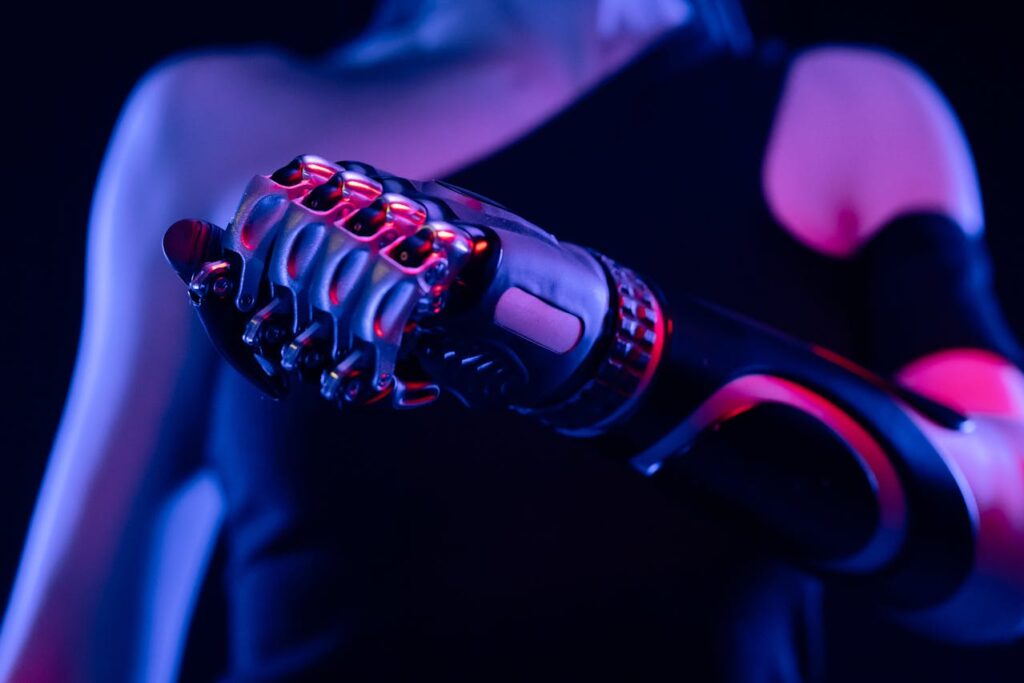
Additionally, providing detailed guidance on how to maintain and adjust the socket interface can help users preserve comfort and functionality over time.
Addressing Heat and Moisture Management
High-impact activities often result in increased heat and perspiration, which can create discomfort for prosthetic users. Advanced prosthetics now incorporate features like breathable liners or moisture-wicking materials to address these challenges.
These innovations help maintain a dry and cool interface, reducing the risk of skin irritation and improving overall comfort.
Businesses that prioritize heat and moisture management in their designs demonstrate a commitment to user well-being.
Offering add-ons, such as sweat-absorbing liners or specialized cooling components, allows users to customize their prosthetics for optimal performance in demanding environments.
Integrating Feedback into Product Development
Ultimately, achieving the right balance between performance and comfort requires ongoing feedback from users.
High-impact activities vary greatly in their demands, and the insights of athletes, adventurers, and active individuals are invaluable in refining prosthetic designs. Businesses should actively engage with their user base, gathering data on pain points, preferences, and desired features.
Creating channels for this dialogue—such as online forums, surveys, or dedicated support teams—ensures that user voices are heard.
Incorporating this feedback into product development cycles not only enhances the prosthetics but also fosters a sense of collaboration and trust between the brand and its customers.
The Role of Technology in High-Impact Prosthetics
Advanced technology has revolutionized high-impact prosthetics, offering features that enhance responsiveness, control, and adaptability. These innovations not only improve performance but also empower users to push their limits and explore new possibilities.
Microprocessor-Controlled Joints
Microprocessor-controlled knees and ankles are a game-changer for high-impact prosthetics. These devices use sensors and onboard processors to monitor the user’s movements and adjust resistance in real-time.
For example, a microprocessor knee can detect changes in speed or terrain, automatically adapting to provide stability and support during running, jumping, or climbing.
For businesses, integrating microprocessor technology into prosthetic designs adds significant value. Highlighting the benefits of increased control and reduced effort in marketing campaigns can appeal to active users seeking an edge in their performance.
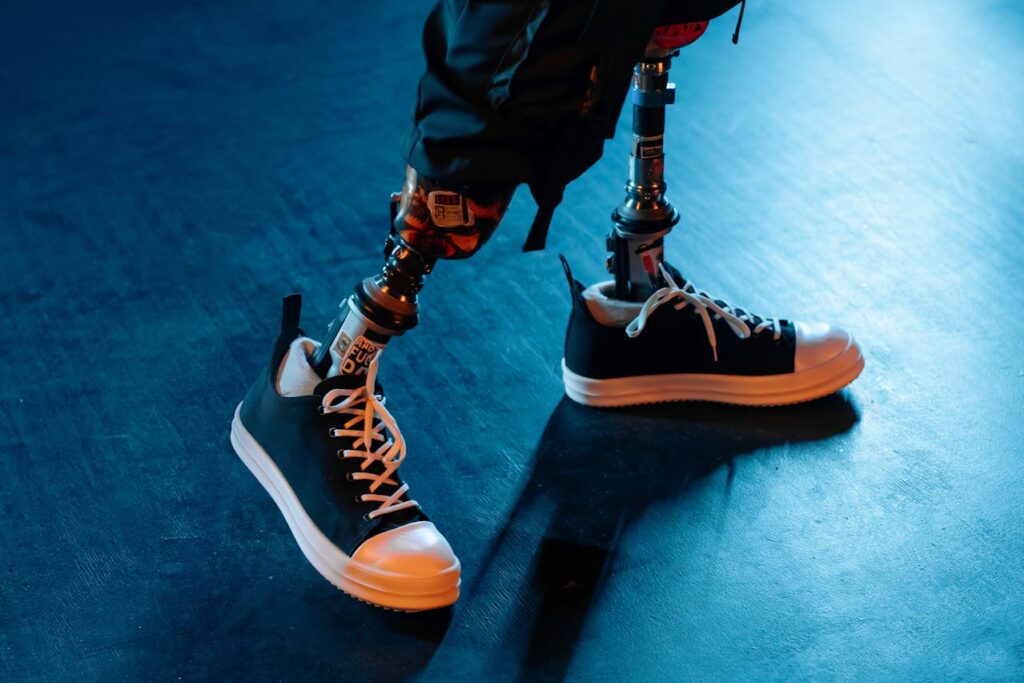
Connectivity and Smart Features
The integration of smart features, such as Bluetooth connectivity and app-based controls, has made it easier for users to customize their prosthetics for high-impact activities. Through a smartphone app, users can adjust settings, track performance metrics, and receive maintenance reminders, ensuring their prosthetic operates at peak efficiency.
For businesses, offering connected prosthetics enhances the overall user experience. Providing accessible platforms for customization and performance tracking ensures users feel supported and engaged with their device.
Elevating Control Through Real-Time Adaptation
One of the most significant advancements in high-impact prosthetics is the integration of real-time adaptation. Microprocessor-controlled joints and adaptive feet leverage sensor technologies to monitor the user’s movements, terrain, and speed, making instantaneous adjustments to optimize performance.
These devices improve balance and responsiveness, allowing users to perform high-impact activities like running or jumping with greater confidence and precision.
Businesses can capitalize on this innovation by incorporating cutting-edge microprocessor systems into their designs. Partnering with AI developers to refine algorithms ensures that prosthetics not only react quickly but also learn from the user’s patterns over time.
Highlighting these capabilities in product marketing can position your offerings as both advanced and intuitive.
Enhancing Feedback with Sensory Integration
For high-impact activities, the ability to feel and respond to environmental stimuli is critical. Prosthetic technology has advanced to include sensory feedback systems that mimic the natural sense of touch.
These systems use haptic feedback or neural interfaces to relay information about pressure, force, or balance directly to the user. This allows for more precise control and reduces the cognitive load required to perform complex tasks.
Businesses investing in sensory integration can create a differentiated product that appeals to active users seeking a natural and immersive experience.
Demonstrating practical applications, such as improved performance in sports or safer navigation on uneven terrain, helps potential customers see the tangible benefits of this technology.
Leveraging Connectivity for Customization and Insights
Connectivity through IoT (Internet of Things) technology has brought new levels of personalization and convenience to prosthetics. Users can now connect their prosthetic limbs to smartphones or tablets, allowing them to adjust settings, monitor performance metrics, and even troubleshoot issues remotely.
This is particularly valuable for high-impact users, as it ensures their prosthetic is always optimized for peak performance.
Businesses can offer dedicated apps that provide user-friendly interfaces for customization, enabling users to tailor their prosthetics to specific activities or environments. Additionally, businesses can utilize connectivity to collect anonymized usage data, providing insights into how users engage with their devices.
This data can inform future product development, ensuring that designs continue to meet the evolving needs of active users.
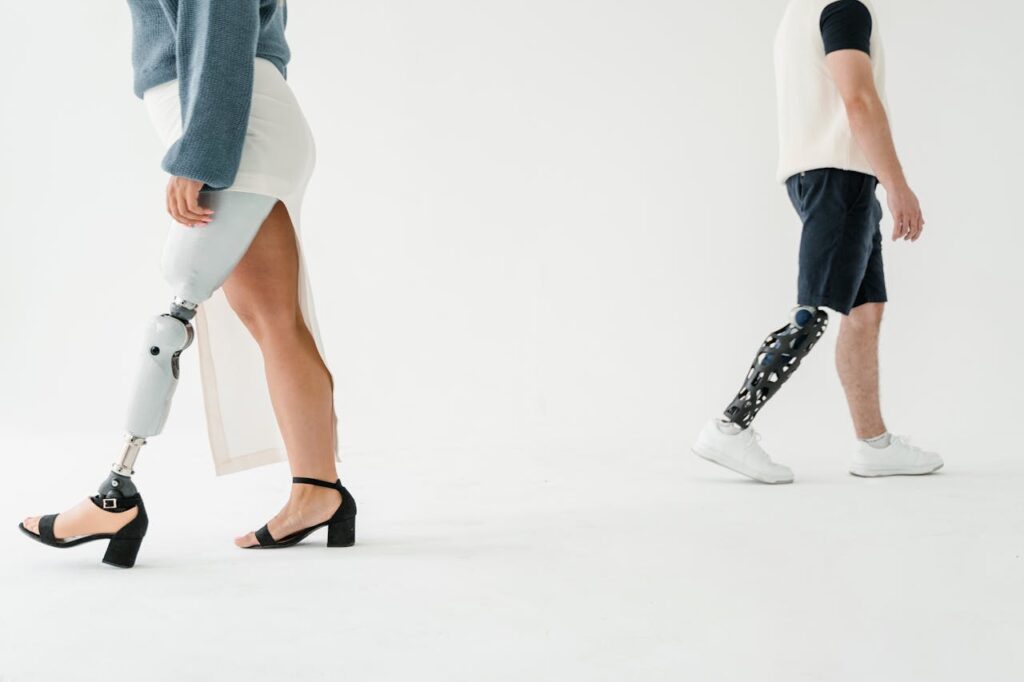
The Emergence of Lightweight Robotics
The integration of robotics into high-impact prosthetics is paving the way for more powerful and efficient devices. Lightweight robotics use actuators and motors to mimic the natural motion of muscles and joints, delivering both strength and agility.
These systems are especially beneficial for high-impact activities that demand quick, precise movements and sustained power.
For businesses, incorporating robotic components offers a unique value proposition. Collaborating with robotics engineers to enhance efficiency and durability ensures that these features can handle the demands of rigorous use.
Educating users about the benefits of robotic integration—such as smoother transitions between movements or increased endurance—positions the prosthetic as a high-performance tool.
Future-Forward Opportunities with AI and Machine Learning
AI and machine learning have redefined what prosthetics can achieve, particularly in high-impact applications. AI-powered prosthetics can anticipate user needs based on previous activity, enabling smoother transitions and reducing the effort required for tasks.
For instance, a prosthetic knee might automatically adjust stiffness during a run or provide extra support during a jump.
Businesses can strategically invest in AI research to develop proprietary systems that set their products apart. Highlighting the real-world impact of these systems, such as enhanced performance in competitive sports or improved safety during strenuous activities, creates a compelling case for users to choose your brand.
Training and Rehabilitation for High-Impact Activities
While choosing the right prosthetic is crucial, equally important is the training and rehabilitation process that enables users to fully adapt to their device. High-impact activities demand precise control, endurance, and confidence, all of which are developed through guided practice and consistent effort.
Building Confidence Through Structured Training
Adapting to a prosthetic for high-impact use requires structured training that emphasizes both physical and mental preparation. Users must learn how to navigate new movements, adjust their balance, and respond to dynamic situations, such as changing terrains or rapid directional shifts.
Physical therapists and trainers play a vital role in this process by guiding users through exercises that mimic the demands of high-impact activities. This may include practicing running techniques, jumping mechanics, or agility drills that build strength and coordination.
For businesses, partnering with rehabilitation centers or offering in-house training programs tailored to high-impact users ensures that customers receive the support they need.
Focusing on Proper Technique
Using a prosthetic for high-impact activities requires mastering proper technique to optimize performance and minimize the risk of injury. For example, runners with a prosthetic leg must learn to adjust their stride to accommodate the device’s mechanics, ensuring efficient energy transfer and reducing strain on the residual limb.
Businesses can enhance user success by providing access to educational resources, such as video tutorials, workshops, or interactive apps. These tools not only teach proper technique but also build user confidence by showcasing how others have successfully adapted to similar challenges.
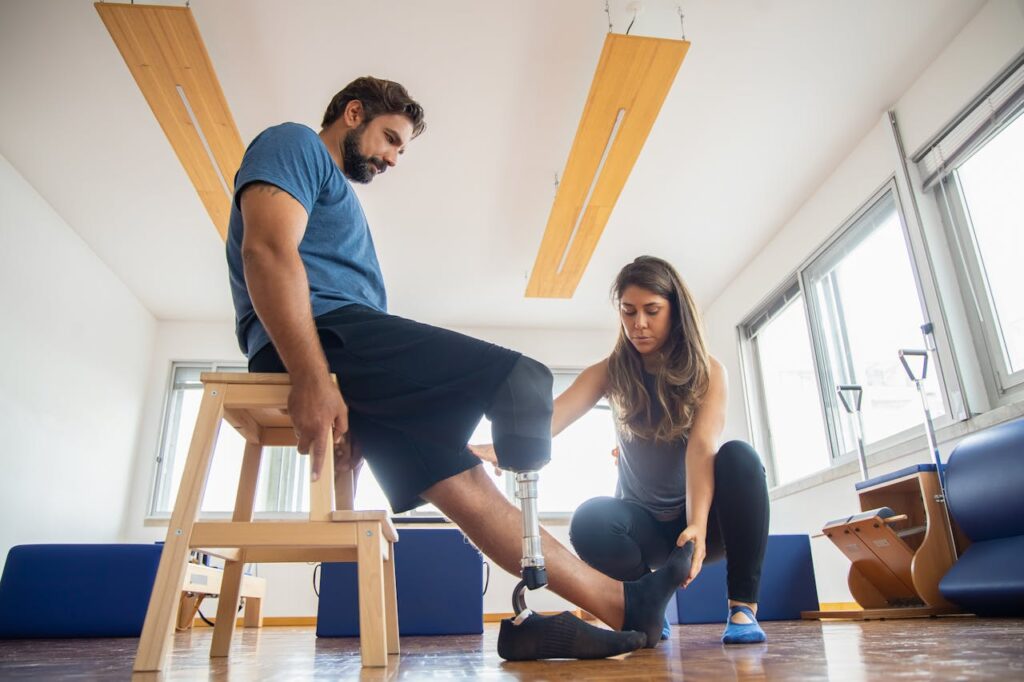
Gradual Progression Toward Goals
Rehabilitation for high-impact activities often involves gradual progression, starting with basic movements and advancing to more complex tasks.
This approach allows users to build a strong foundation of skills before attempting more demanding activities. It also reduces the likelihood of setbacks, such as injuries or frustration, that can occur when attempting to do too much too soon.
Businesses can emphasize this gradual approach in their training programs and marketing efforts. Offering milestone-based plans or gamified rehabilitation exercises keeps users motivated and engaged, helping them achieve their goals at a pace that feels manageable and rewarding.
Maintenance and Longevity for High-Impact Prosthetics
High-impact activities place greater stress on prosthetic components, making regular maintenance essential for ensuring longevity and performance. Users need to understand how to care for their prosthetic and recognize when adjustments or replacements are necessary.
Routine Inspections and Servicing
Prosthetic components such as joints, sockets, and feet should be inspected regularly for signs of wear and tear. For high-impact users, this might involve checking for loose screws, assessing the condition of energy-return systems, or ensuring liners and padding remain in good condition.
Businesses can add value by providing detailed maintenance guides, online troubleshooting tools, or access to servicing specialists.
Upgrades and Adaptations
As users grow more confident and their activity levels increase, they may require upgrades or adaptations to their prosthetic. For example, a runner might benefit from a more advanced blade, or a hiker might need a foot with enhanced grip for rugged terrain.
Offering modular components or upgrade packages allows businesses to cater to evolving user needs, fostering long-term customer relationships.
Conclusion
Choosing a prosthetic for high-impact activities is a decision that can transform how individuals engage with their passions and navigate the world. The right prosthetic doesn’t just meet functional requirements; it empowers users to push boundaries, overcome challenges, and embrace life’s adventures with confidence.
For users, the journey begins with understanding the demands of their chosen activities and selecting a prosthetic designed to meet those needs. From shock absorption and durability to advanced features like microprocessor control, each component plays a vital role in enhancing performance and comfort.
Equally important is the process of training and adaptation, where structured rehabilitation and consistent practice pave the way for success.
For businesses, catering to high-impact users offers an opportunity to innovate and build trust. By prioritizing durable materials, advanced technologies, and personalized solutions, companies can address the unique needs of this active community. Offering comprehensive support—from training resources to maintenance packages—ensures that users feel confident and cared for throughout their journey.



